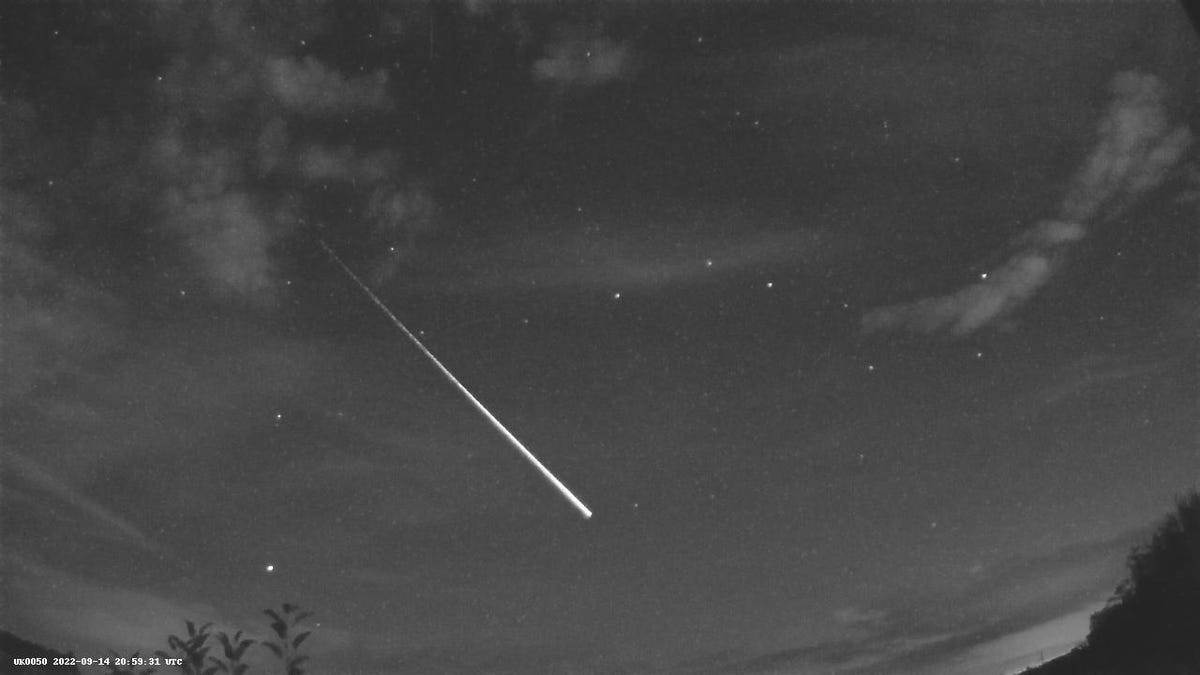No, That Mysterious Fireball That Lit up the Night Sky Wasn't Space Junk
It burned long and bright over Ireland and Scotland before going for a permanent swim.

The fireball was visible for over 20 seconds on Wednesday night.
An unusually bright, long-lasting fireball blazed a path across the skies over Ireland and Scotland Wednesday night, prompting many to wonder if they were witnessing the demise of a SpaceX Starlink satellite in the atmosphere. Now experts say it was just a small chunk of an asteroid.
The International Meteor Organization, or IMO, got deluged with nearly 1,200 reports of fireball sightings from across the UK at 9:58 p.m. British Summer Time on Wednesday. The sizzling object burned with a bright, greenish-white hue for more than 20 seconds.
Initially, data from the UK Meteor Network of 172 sky cameras suggested it might have been a de-orbiting Starlink satellite.
Hey @elonmusk is this one of yours? pic.twitter.com/bEBNvsuA4i
— UK Meteor Network (@UKMeteorNetwork) September 15, 2022
But a check of the positions of Starlinks and other known space junk revealed nothing artificial could account for what turned to toast over the UK at that time.
Can’t believe I seen this and managed to catch it on camera!! Going over Paisley at 10pm☄️ #glasgow #paisley #meteor #comet #fireball @UKMeteorNetwork @Daily_Record pic.twitter.com/mH9o2062nI
— Vanessa (@_vangal) September 14, 2022
"This impressive event was associated to the atmospheric entry of a meteoroid coming from the inner parts of the asteroid belt, between Mars and Jupiter, according to UK Meteor Network analysis," reads a blog post from the IMO on Thursday. "The object entered the atmosphere at 14 kilometers per second (31,317 miles per hour) velocity, which is much too high for a space junk, satellite or rocket stage reentry, proving its extraterrestrial nature."
The fireball traveled almost 300 kilometers (186 miles) while it was visible, passing over parts of Wales and Belfast in Northern Ireland. Any remaining meteorites almost certainly fell in the Atlantic Ocean.
OK. The final analysis is in! The fireball over NI and Scotland last night was definitely a meteor. The fireball observed yesterday (Sept 14, 20:59:40 UT) above the UK lasted over 20 seconds and traveled NW, passing directly over Belfast. 1/4 pic.twitter.com/GnV70S13B8
— UK Meteor Network (@UKMeteorNetwork) September 15, 2022

